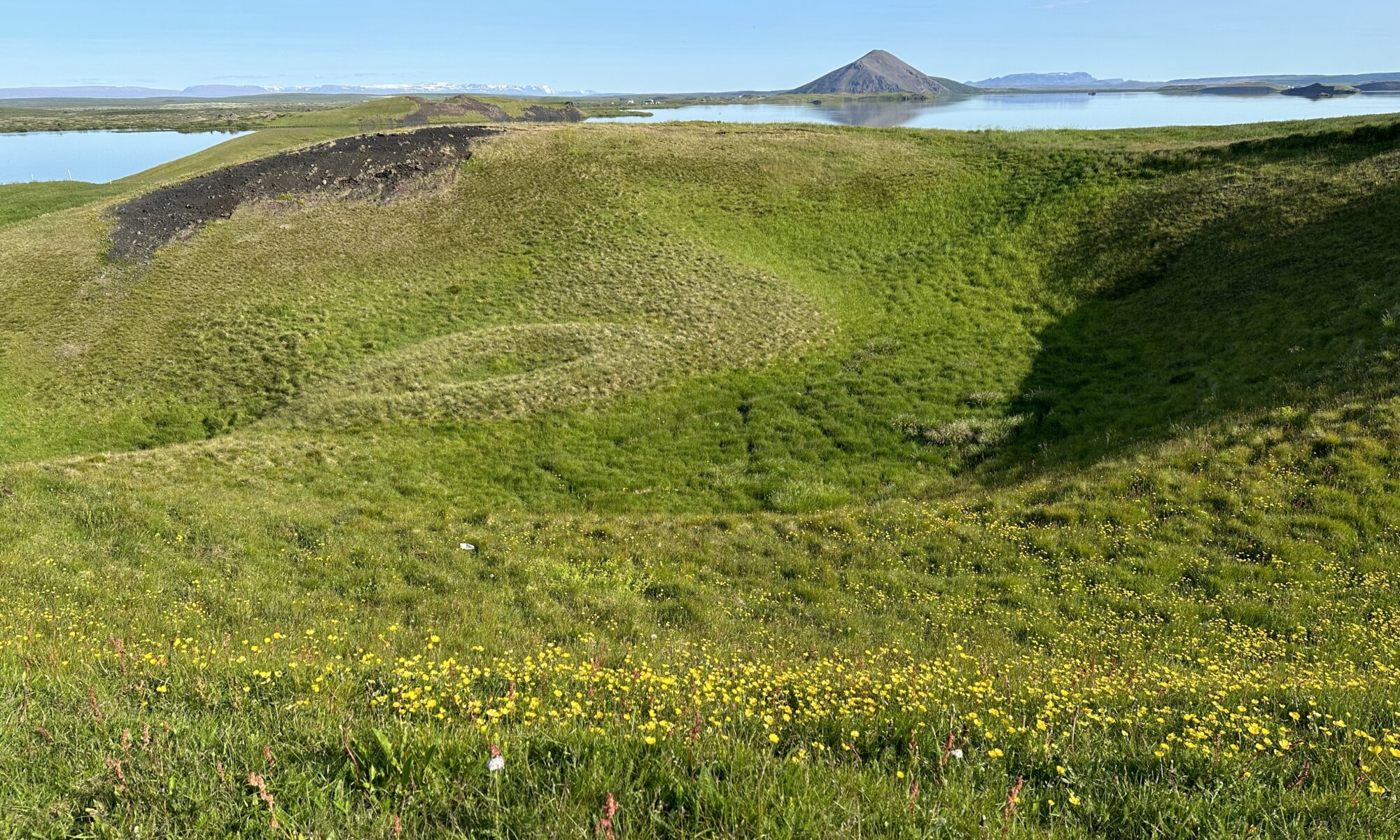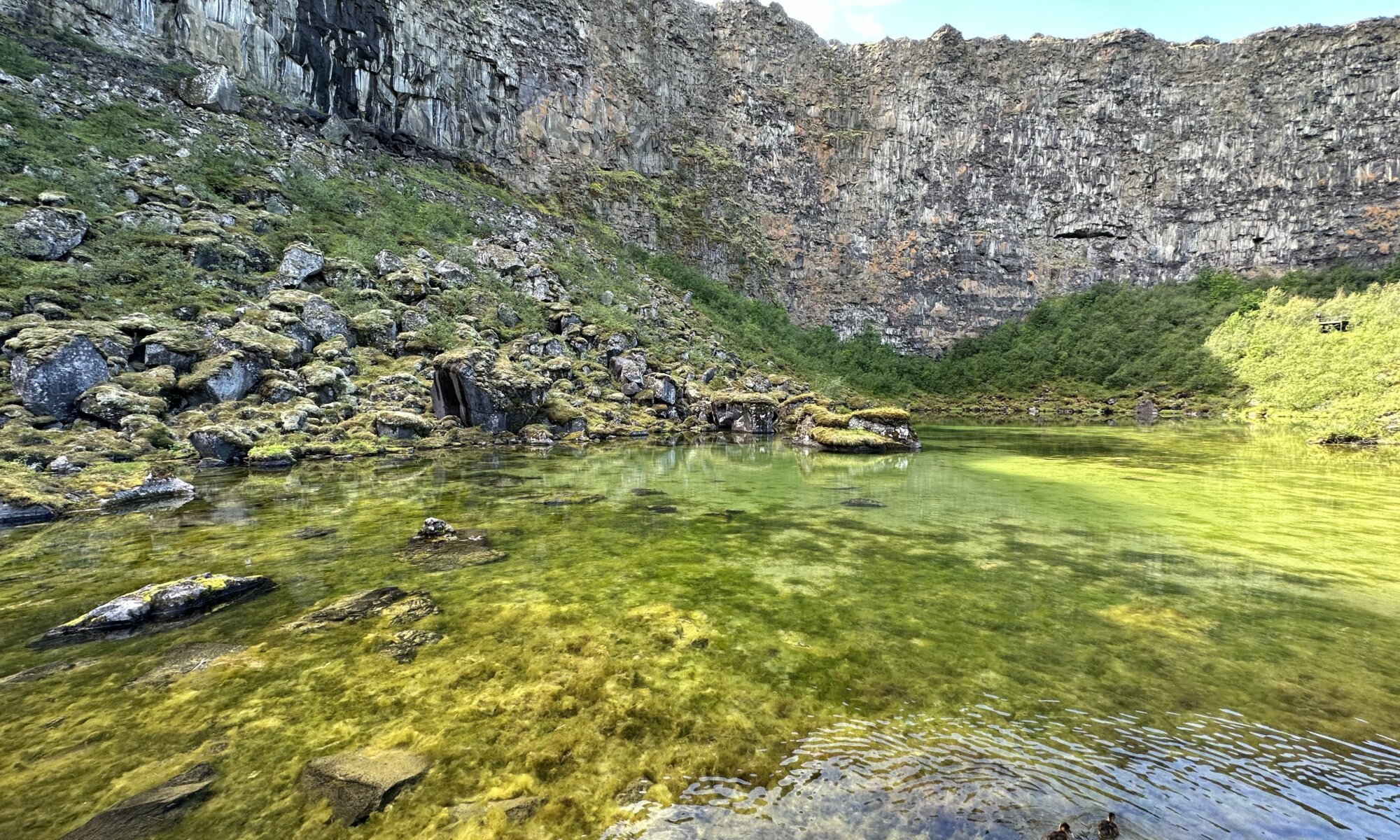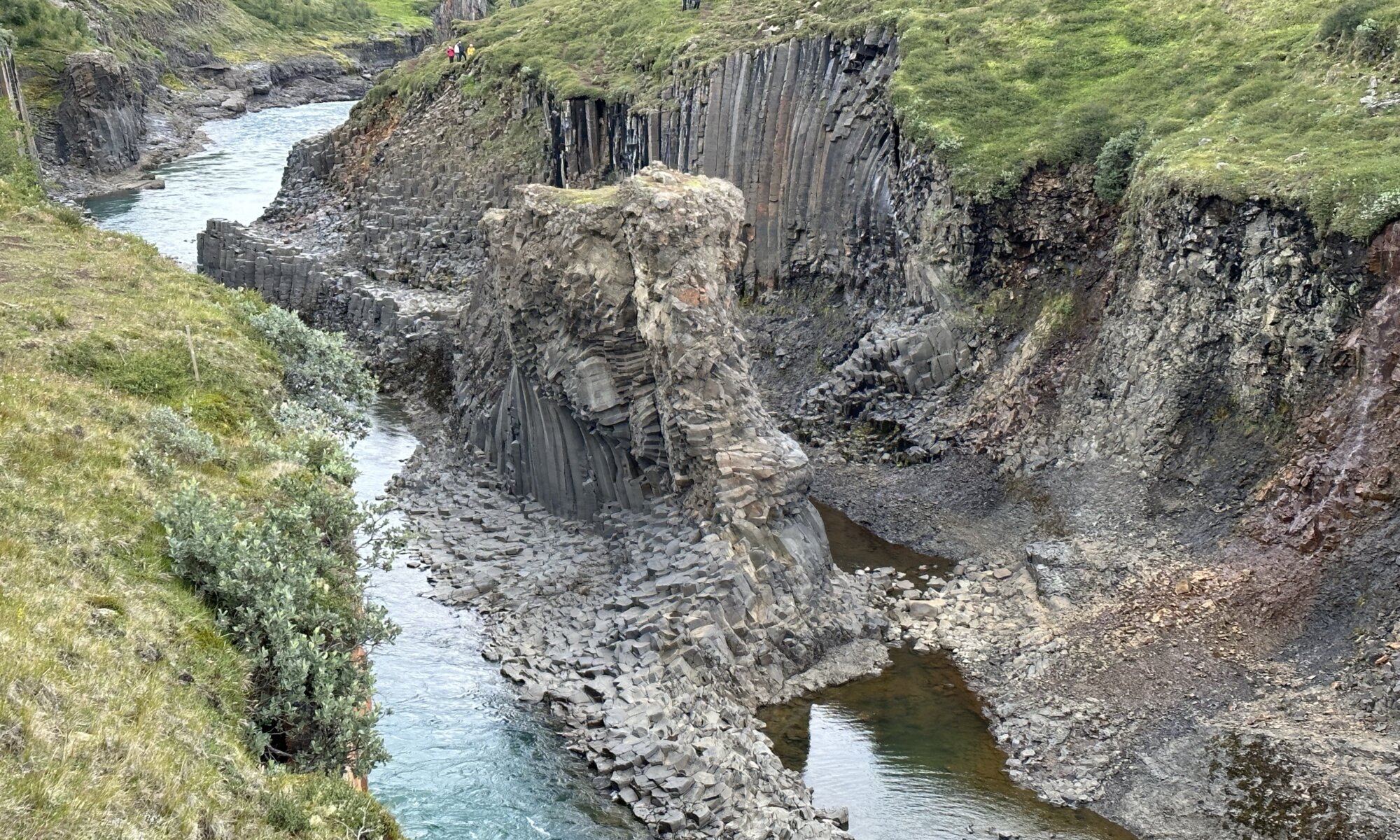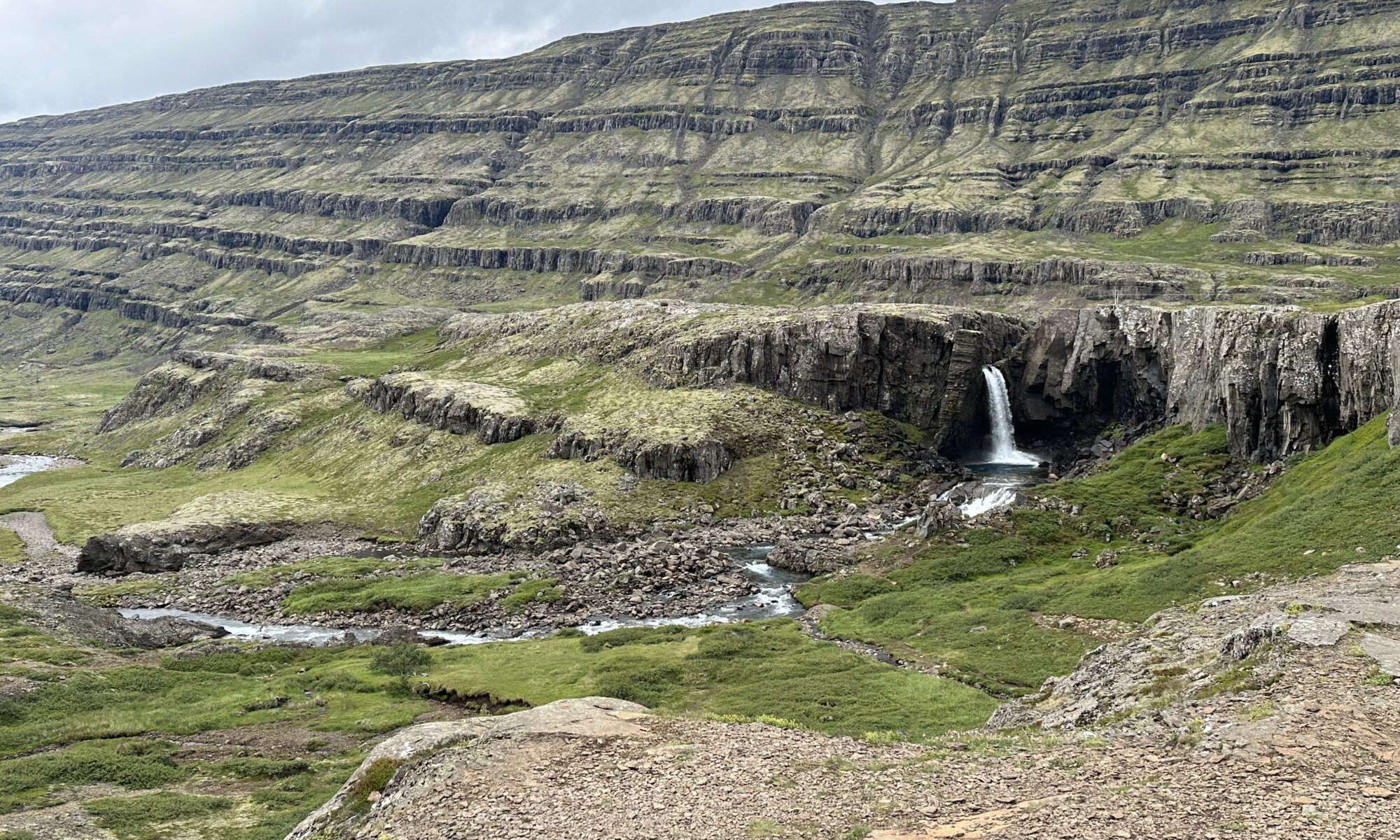2,000 years ago lava came out of the earth and created a lava lake close to the Mývatn lake. Water vaporized underneath and created impressive stone structures: domes and arches, rock windows and hollow structures. Today you can hike through the Dimmuborgir (‘dark rocks’) area and discover them. Imagination can create stories about this bizarre shaped rock structures. The most famous is the Kirkjan which looks like a Gothic-style church.
Continue reading “Lava field”Mývatn
The Mývatn lake is one of the most-beloved areas for tourists on Iceland. Around the lake you’ll find lava fields, volcanos to climb, geothermal spas and bubbling mud pits. If you like you can also cycle around the lake. The name of the lake itself tells you about the plague of this region: Mývatn means mosquito. You shouldn’t worry too much as they’re not biting, they’re just flying around you and are therefore only a little bit annoying. You can buy a net to protect your head in different locations but I deemed that to be superfluous.
Continue reading “Mývatn”Whale watching
Húsavík is the perfect port for whale watching. In this area it is strictly forbidden to hunt these giant animals and tourism helps to protect them. After getting the right introduction into the topic at the whale museum in the harbor area you can get on a boat to see humpback whales and dolphins; but also puffins and large jellyfish. Different operators offer tours on various types of boats. You should play safe and book online in advance.
Continue reading “Whale watching”Ásbyrgi canyon
A canyon with high rocks surrounding it, with an endless amount of birch trees, a beautiful green lake, a dry-fallen waterfall and a lot of hiking paths. That is Ásbyrgi. Geologists name glaciers and over time moving waterfalls as the creators of this special landscape. The legend says it is the hoofprint of Odins horse Sleipnir that created the valley. Believe what you want to believe, but having a short hike through the valley is something you shouldn’t reject.
Continue reading “Ásbyrgi canyon”Three waterfalls
If you forget that you’re on Iceland you might think that there is water on the moon: on the way from Egilsstaðir to the Mývatn lake you need to have a detour along the Jökulsá á Fjöllum river. It is the second-largest river of the island and runs in this area through volcanic remains only allowing a tiny little piece of life. And in between all these stones a gorge opens up creating three impressive waterfalls: the Selfoss, the Dettifoss and the Hafragilsfoss.
Continue reading “Three waterfalls”Stuðlagil
An island with massive volcanic activity also produces are lot of basalt structures: lots of columns and fields of octagons. A perfect place to discover them is the Stuðlagil canyon east of Egilsstaðir. It is a small detour from the ring road but one absolutely worth to do. The canyon was hidden under water until the Kárahnjúkavirkjun barrier lake was created in 2006. When the water was gone the beauty of the canyon was discovered and found its way into an aircraft magazine – and thereby started to attract many tourists.
Continue reading “Stuðlagil”Puffins
Puffins are cute birds and easy to recognize with their colorful beaks. They bread on cliffs in the far north and in fact 60 % of them bread on Iceland. Their population is continuously shrinking and therefore they are officially classified as a vulnerable species. Puffins are hunting fishes and crabs and fly over winter into the south: to the Mediterranean Sea and the north of Africa. If you’re visiting Iceland you’ve got different options to see them and you’ll be astonished how close you can get to them.
Continue reading “Puffins”Untarred
When you’re exploring Iceland counter-clockwise as most tourists do, you need to take a decision once you reach Djúpivogur. From there you can follow Hringvegur / Þjóðvegur 1 along the coast (to see some more fiords and a gem collection) or take a shortcut to Egilsstaðir: the Öxi valley. I wouldn’t see it as a shortcut, because it is a fantastic experience to drive up this valley on road 939; you just need to be willing to take an untarred road and often to be ready to drive through the fog on top.
Continue reading “Untarred”Djúpivogur
In the East of Iceland you can find Djúpivogur, a small harbor city with a long trading history; merchants from Hamburg where the first doing business here. Today the village has 400 400 inhabitants working on fishing and tourism, sometimes smaller cruise ships anchor here underneath the 1,000 meters high and triangle-shaped mountain Búlandstindur. Most often tourists do have an overnight stop here because of the position on the ring road.
Continue reading “Djúpivogur”Iceberg ahead
The best place to see glaciers and icebergs is the Jökulsárlón glacier lake. It can be found directly at the ring road and the water is clear blue, a magic sight. It is at the southern end of the Vatnajökull glacier and the deepest lake of Iceland. Its water is running nearly directly via a very short river to the sea at a region known as the Diamond Beach. Standing at this river you can observe sea lions playing as well es icebergs drifting towards the ocean.
Continue reading “Iceberg ahead”









